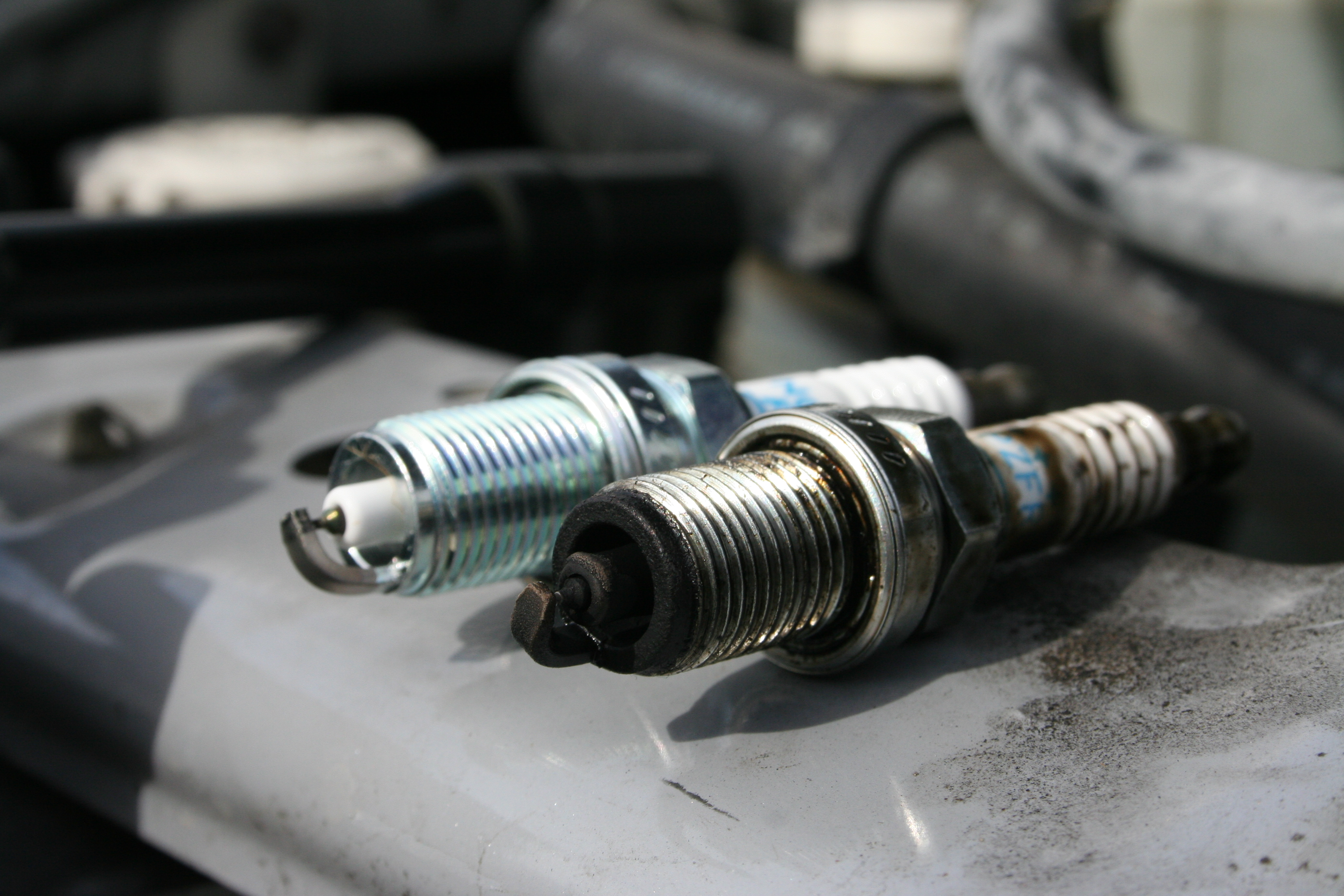Posted on 4/27/2017

In the old days, a tune-up was necessary about every 35,000 miles. It would usually consist of setting the ignition timing, replacing the mechanical breaker points in the ignition, cleaning and adjusting the carburetor and replacing the plug wires and spark plugs. Today, of course, the carburetor’s job is done by fuel injection and the ignition timing and spark are controlled by the engine computer. Few vehicles still have plug wires anymore either, as the distributor was replaced by the computer and a coil-on-plug design which delivers a spark at each spark plug. But what about the spark plugs themselves, though? How often do they need to be replaced now? Manufacturers tout an 80k-100k mile service interval on spark plugs now, thanks in part to improvements in plug design and materials. That might be stretching it, however. Remember that if you have a 100,000-mile spark plug, its electrode is worn down 4/5 of the way at 80,000 miles. A worn electrode means a wider spark plug gap ... read more
Posted on 4/13/2017

Even just a pound or two of underinflation in your tires can be a problem. Why, though? There are several reasons. Fuel economy: If you ever rode a bicycle with a low tire, you know that it feels like you’re riding through wet cement due to the added rolling resistance. The same thing is happening with your car, and compromising your fuel economy. Over the course of 10,000 miles per year, that can add up to 150 gallons of gas or $500 out of your pocket!Handling: Low tire pressure means poorer control and longer stopping distances. At high speeds, in particular, this can be downright hazardous.Premature tire wear: Underinflated tires are under a lot of stress, especially their steel belts. Take a paper clip and work it back and forth until it snaps. Feel how hot it gets when the metal is stressed? The same thing happens with the steel belts in your tires, which are already heating up anyway due to normal wear. This heat and stress will cause uneven tread wear a ... read more